
Many of the most flavorful sauces in any cook's repertoire are made using cooking juices from the main ingredient. This might be as simple as a gravy to go with a roast, or as elegant as an acidic gastrique to spoon over a slice of seared foie gras, but the principle is the same. In most cases the sauce will need to be degreased, as the juices will contain an undesirable quantity of fat.
Pour away the pan juices or finished sauce into a measuring cup or cylindrical container. Let the juices rest for five minutes, after which the fat will be concentrated at the top.
Ladle or spoon the layer of fat away from the sauce. When the fat has been mostly removed, and only a small amount remains on the surface, blot up what's left with paper towel or brown paper, such as strips torn from a paper bag.
Refrigerate the sauce. Most kinds of fat and grease will solidify or congeal on the surface of the sauce, and can be removed more easily. Your freezer will do the same thing in a shorter time, but the sauce must be removed before it freezes.
Degrease the sauce at the table, if necessary, by using a ladle or sauce boat with a built-in skimmer, which holds back the fat floating on top but lets the sauce flow through underneath.
Related Articles
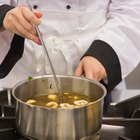
How to Skim Grease in Sauce

How to Remove Fat From Soups and Sauces
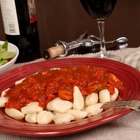
How to Freeze Marinara Sauces

How To Separate Fat From Meat Juices
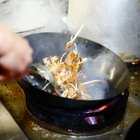
Can You Make a Reduction Sauce From ...

Can You Refreeze Cooked Spaghetti Sauce ...

How Long Can You Refrigerate Nacho ...

How to Separate Fat Without a Fat ...

How to Thicken Sauce With Powdered ...
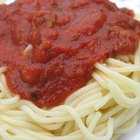
How to Store Pasta Sauce

How to Freeze Canned Cranberry Sauce
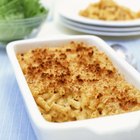
Why Does a Sauce Curdle?

Can You Use Half and Half to Replace ...
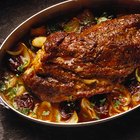
How to Use a Roaster for Pork

How Can I Counteract the Sourness of a ...

How to Substitute Potato Starch for ...

Do You Need to Refrigerate Whipped ...

Tips for Grilling Steak With A1 Sauce
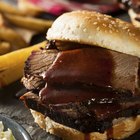
How to Make Corned Beef Gravy
How Many Calories Are in Peanut Sauce?
References
- "Professional Cooking"; Wayne Gisslen; 2003
- "On Cooking: A Textbook of Culinary Fundamentals"; Sarah R. Labensky et al.; 2003
- "The American Woman's Cookbook, Wartime Victory Edition"; Ruth Berolzheimer (Ed.); 1944
Tips
- Most roasts need to rest for 15 to 20 minutes before carving. If you pour off the pan juices a half-hour before the roast is finished, that provides ample time to degrease the juices and make up your sauce or gravy.
Writer Bio
Fred Decker is a trained chef and prolific freelance writer. In previous careers, he sold insurance and mutual funds, and was a longtime retailer. He was educated at Memorial University of Newfoundland and the Northern Alberta Institute of Technology. His articles have appeared on numerous home and garden sites including GoneOutdoors, TheNest and eHow.
Photo Credits
Jupiterimages/liquidlibrary/Getty Images